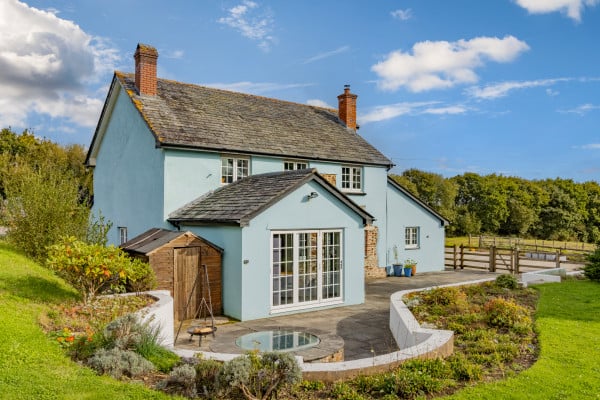Is There a UK Housing Shortage?

The UK population has increased dramatically in the last two decades. As older generations are now living longer due to the quality of medical care and net migration has boosted the population, the UK saw a growth of 9.1 million between 1995 and 2020, equating to an increase of 15.6%. However, this rate of growth is expected to slow, as the baby boomer generations age and less people are of child-bearing age.
Regardless of projected population forecasts for the next decades, soaring numbers have contributed to a lack of suitable housing. In 2019, the Conservative manifesto included a pledge to increase the number of new homes being built with a target of 300,000 homes per year, with an emphasis on affordable housing. This target has never been realised and the government has since abandoned it; but the issues still remain.
Social housing has also suffered from a lack of investment in recent times. Given rising land and development costs, fewer new homes are being built and this shortfall is driving more people into the rental market, resulting in ever more demand and less supply.
Why Is Building More Homes Problematic?
The past few years have been tumultuous worldwide and the UK is no exception. The construction industry found itself facing a host of significant challengers; firstly, with the UK's decision to leave the EU. The end of freedom of movement for citizens of the EU has prevented skilled and unskilled labourers from relocating to the UK and exposed a shortage of construction workers. The issue is difficult to dismiss given the fact that before Brexit, around 40% of construction workers came from other countries within the EU.
Coupled with the lack of available workers is a shortage of construction materials, leading to increased prices. Lorry drivers are also in short supply so construction companies are paying out more for delivery. These issues have been exacerbated by the Covid-19 pandemic, the subsequent cost of living crisis and the war in Ukraine.
What Are the Knock-on Effects of the Housing Shortage?
The continuing lack of available and affordable housing has a significant impact on society. With young people struggling to save enough money to get on the housing ladder and higher rental costs due to increased demand, younger generations are often forced to remain at home with their parents rather than spreading their wings and moving on. Overcrowding is a recurring theme, with families and friends falling back on the generosity of others.
People often have no choice but to accept inadequate living conditions given the lack of other options. Research by Shelter also indicates that homelessness has risen by 74% in the last decade, a distressing statistic driven by a lack of acceptable rental options and social housing.
Action Needed to Address the Housing Shortage
This deepening issue will only continue to worsen without government intervention. It is crucial that shortages are addressed at a local level. While councils need to be given the funding to build new and affordable social housing, there is also a need for considerable reform of planning regulations. The current system is slow and difficult to navigate, resulting in delays which only magnify the existing problems. Furthermore, councils also need to be supported to improve and update existing social housing.
Investment and reform are urgently needed in order to overcome the issues of overcrowding, inferior living conditions and homelessness. The impact of the Covid-19 pandemic and cost of living crisis continues to exacerbate a situation which must be addressed as soon as possible.
Image is from a semi detached property for sale in Low Row, Brockmagill. For the full listing, please click here.

A Sit-Down Interview with Emoov CEO Nick Neale
02.12.2025Join us for a sit-down chat with our CEO, Nick Neale, as he shares the story behind Emoov, how the online agency began, and what drives the way we work today.

Why UK Homes Are Becoming More Affordable (And What It Means If You're Selling or Buying)
01.12.2025After years of house prices rising way faster than wages, things are starting to shift. With earnings growing faster than property values for the fourth year in a row, home ownership affordability is finally improving across the UK. But what does this mean if you're thinking of buying, selling, or trying to move up the property ladder? In this blog, we unpack the latest trends and offer practical advice for navigating a more balanced market - whether you’re doing it yourself or listing with Emoov.

Has Your Home Increased in Value? What 2025 Property Prices Mean for Sellers
30.10.2025Homeowners across the UK are asking the same question: has my property increased in value over the last few years? With new figures showing that over a million homes have jumped by more than 50% in value since 2020, it might be time to take a closer look. Whether you're considering selling, remortgaging, or just curious, here's how to understand your home's worth in today's market.
.png)
Emoov Featured in The Glasgow Times: A Low-Cost Way to Buy, Sell & Let Homes
01.10.2025We’re proud to share that Emoov has been featured in The Glasgow Times, in an article spotlighting how our online-first approach is transforming the property market. The piece, published in the paper’s Scotland Today section, explored how Emoov offers sellers, buyers, and landlords a fairer and more transparent way to move home — without the hefty commissions of traditional estate agents.

Is Your Property Listing Breaking the Law?
01.10.2025Since April 2025, new consumer laws mean sellers must disclose more about their homes - or risk falling foul of the rules. If you're selling your own property, it's important to understand what counts as “material information” and how to stay on the right side of the law. This guide breaks it down in plain English - and includes a free checklist to help you get it right.
.png)
Emoov at One Year: A Family Company, A National Presence
03.09.2025In August 2024, Griffin Property Co took a bold step forward: we rebranded as Emoov. A year later, we’re proud to reflect on what has been an incredible 12 months of growth, change, and above all, a renewed commitment to the people we serve.









